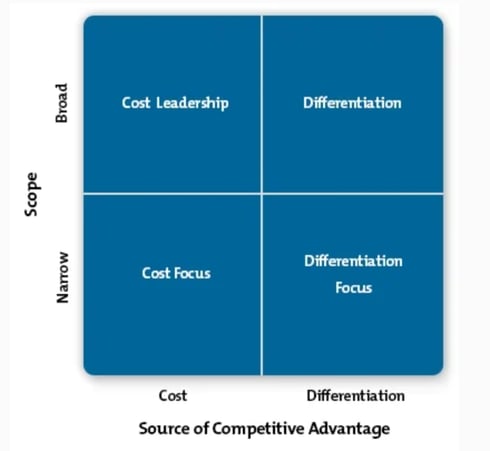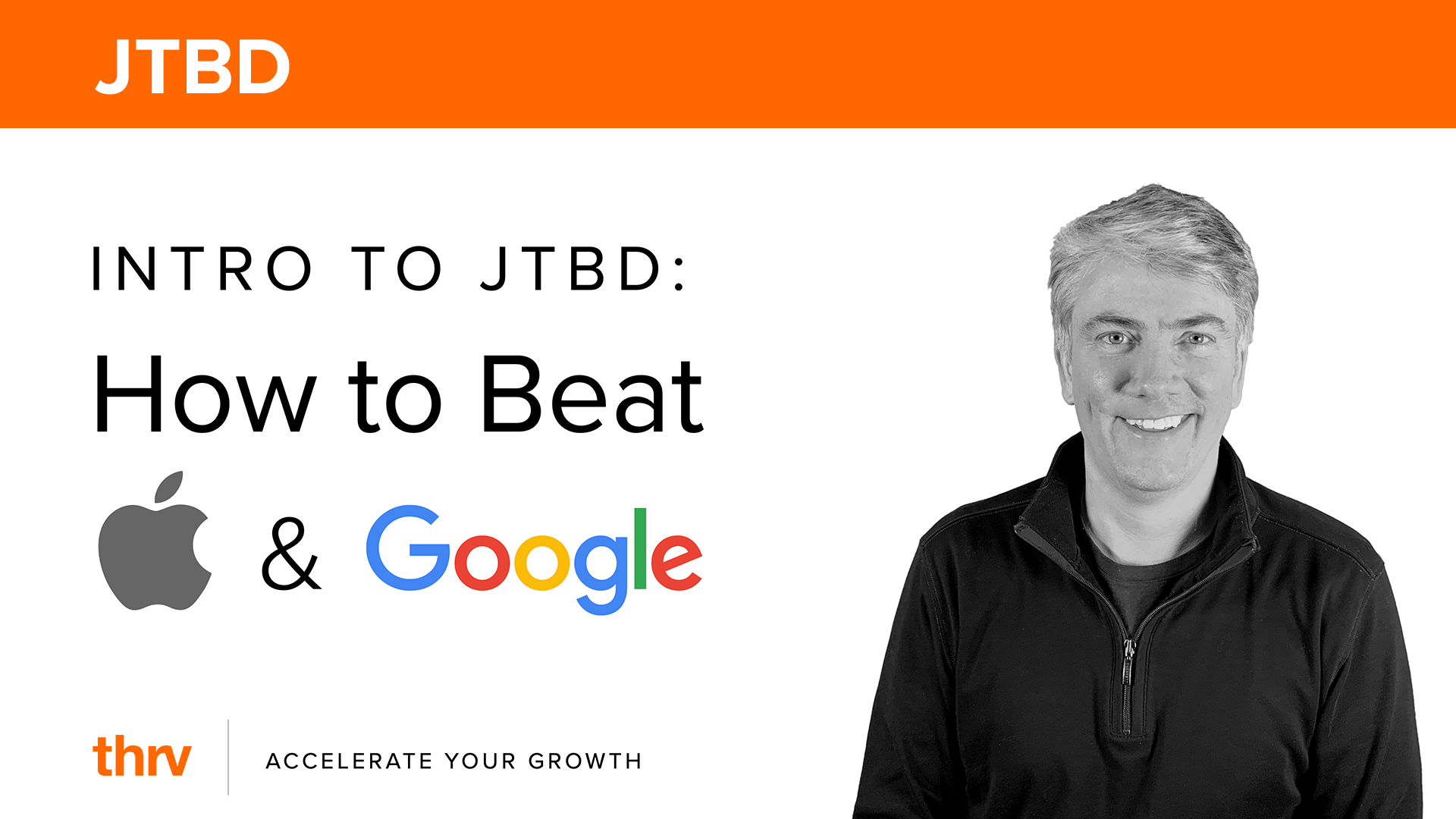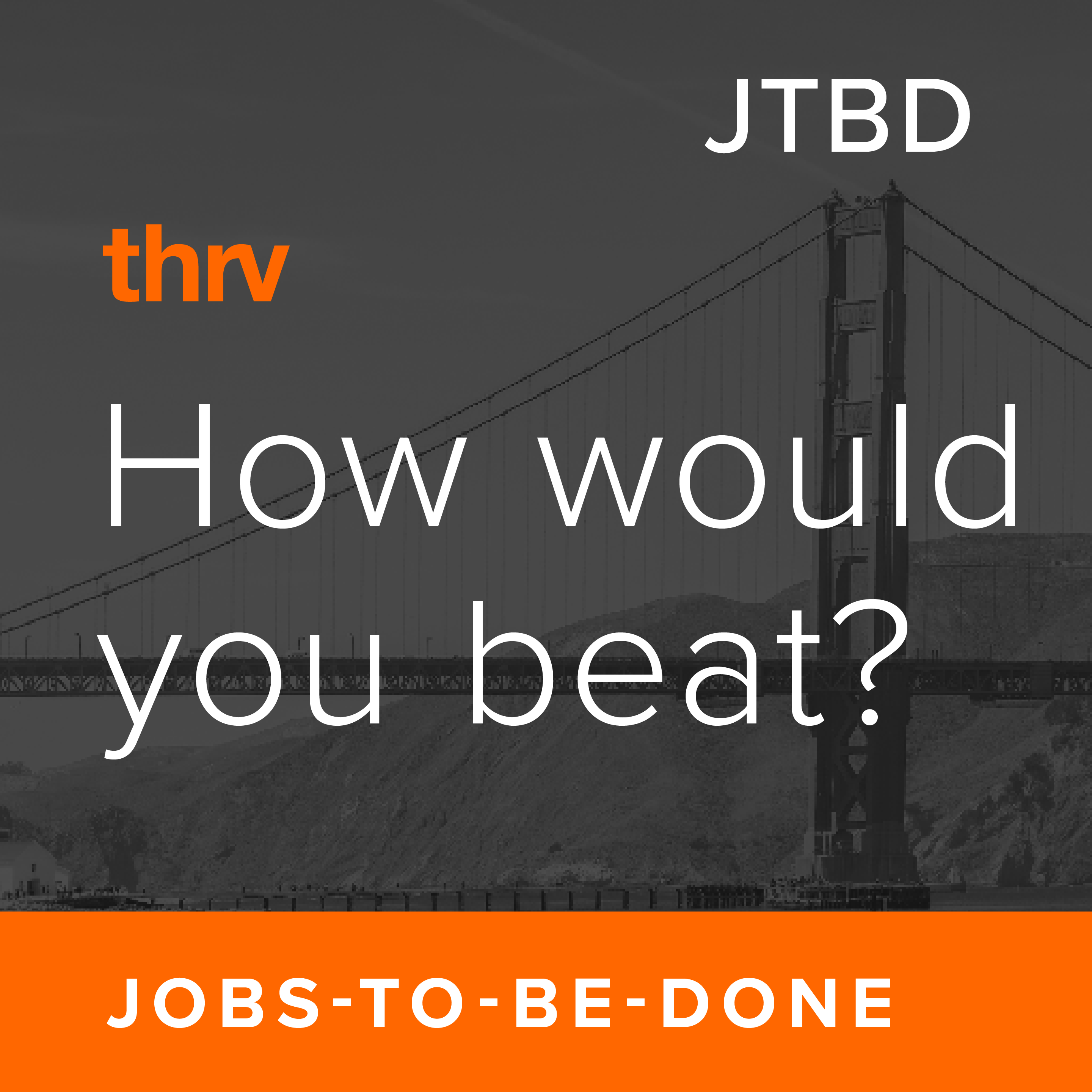September 7, 2020
How Google Sheets Took Share From Excel Using Competitive Positioning

By definition, most product, marketing and sales people don’t work at market leading companies. In order to build a business, we need to get people to switch from using some other product or get them to add our product to their solution set. We know this goal is achievable because we’ve heard great product success stories: Salesforce beats Siebel Systems, Spotify overtakes Pandora, and, one of my favorites, Google Sheets vs Microsoft Excel.
In this post, we’ll use Jobs-to-be-Done to understand how Sheets’ competitive position made it clear to customers when they should switch and why, and in the process took share from Excel. Through this story, you’ll learn how JTBD can help you define a differentiated competitive position that leads to growth.
But first, what does competitive positioning mean?
Identify Competitive Positioning
Competitive positioning is how you differentiate yourself from competitors so that your customers will know when and why to choose your product over your competitors.
In his 1985 book, Competitive Strategy, Harvard Business School professor, Michael Porter, identifies 4 different competitive positions that can be used to achieve a competitive advantage. The basic idea is that you can use your advantage on costs to target the broad market or a niche market, or you can use your product differentiation to target the broad market or a niche market.
Credit: https://www.mindtools.com/pages/article/newSTR_82.htm
-
Cost Leadership Position - Target the broad market with lower costs than your competitors. Either maintain a high price and generate higher margins or lower your prices and take more market share.
-
Cost Focus Position - Focus on a narrow or niche market with a low cost product.
-
Differentiation Leadership Position - Satisfy needs with your product differently than your competitors in the broad market.
-
Differentiation Focus Position - Satisfy needs with your product differently than your competitors in a narrow or niche market.
What was Google Sheets' Competitive Position Within This Rubric?
The Google Blog post announcing Google Sheets in 2006 is titled, “It’s Nice to Share.” It talks about how Google wants to help people “quickly and easily share information in real time,” and closes with:
So don’t be surprised if you are soon invited by someone to share a spreadsheet. (We're rolling this out as a limited test.) Your kid's sports coach, your aunt in Omaha trying to organize a major family reunion, your friend who promised to compile a list of all your favorite hiking trails (and now wants you to help), or your project team which now has a way to keep tasks and status in one place for all to see.
In the official product announcement, Google highlights the drawbacks of traditional spreadsheet software, “Ever found yourself trading email attachments with several colleagues, trying to collaborate on a document, only to have someone chime in at the last moment with corrections to an outdated version?” They then explain that on Google Sheets & Docs, users can “easily collaborate with others, online and in real time.”
When it launched, Google Sheets was free. Excel, of course, could only be used by people who purchased a Microsoft Office license.
From this messaging, we can see that Google targeted a broad market (the variety of customers mentioned in the blog post) with lower costs (free). But, they also differentiated their product. They used a combination of Porter’s Cost Leadership and Differentiation Leadership positioning strategies to win.
If you were Google’s product team, how would you maintain confidence in this positioning strategy when publications like MIT Technology Review are writing, “Leading technology bloggers’ reactions to Google Spreadsheets… have ranged from lukewarm to hostile.”
How do you determine the positioning strategy and marketing strategy that will win, on what dimensions to differentiate your product, and what features to focus on during the next product offer to avoid getting caught in the dreaded feature catch-up trap with your leading competitor?
And let’s assume you don’t have unlimited funds like Google so your answer can’t be, “Hire the smartest people in the world, pay them enormous salaries, hope for the best, and if they don’t succeed no big deal because we still have AdWords.”
This is where Jobs-to-be-Done can be a huge help in mitigating the risk of choosing the wrong competitive position and helping your team stay confident that they are on the right path.
In JTBD, your competitor position is defined by answering the following questions:
-
What customer will you target?
-
What Job will you target?
-
What Job Steps will you target?
-
What product platform will you choose to satisfy unmet needs in the job steps differently from your competitors?
These questions put the focus on the “Differentiation” half of Michael Porter’s quadrant. Once you answer those questions, you can then set your price based on the customer’s willingness to pay to get the job done, the cost of developing your solution, and your target profit margin.
You can conduct market research to answer these questions. The research gives you insights that help you stay confident in your position decision and your product roadmap even when you will never catch up to the feature set of the incumbent.
Here's how it works:
-
Define your customer
In JTBD, your key customer is the Job Beneficiary--the person who benefits from the job getting done. Google made an explicit choice to target consumers and general information workers as opposed to the financial analyst professionals that were Excel’s power users. This is the first way in which they differentiated their position from Excel--a different customer choice.
-
Choose jobs to target
A job is the goal your customer is trying to achieve independent of any solution. The fact that people want to achieve these goals is the reason why markets exist. In Jobs Theory we define a market as a group of people trying to get a job done as opposed to a group of people who purchase a particular product. Since products change over time but jobs do not, this market definition gives product teams a stable target. As technology changes they are still trying to help customers achieve the same goal and can think through how the new technology will get the job done better as opposed to feeling like the market for their product has disappeared.
The key is to choose jobs that people struggle with and which have a market size large enough to achieve your revenue goals. The market size is calculated from the willingness to pay to get the job done and the number of people who want to get it done. Here, Google made another distinct choice, targeting jobs like, “organize an event” and “get projects done with a team.” The biggest insight into their strategy is the fact that there are no jobs along the lines of “make a complex financial decision,” which is a major focus of Excel and the complex feature set that power users such as financial analysts use. To feel confident in this choice, you can conduct research to find out how many people need to get the jobs done, how much they are willing to pay for it, and how difficult it is for them to get the job done. Google chose jobs that very many people are willing to pay a little bit to do (still a large market).
When you look at the job steps you can see the struggle for the customers Google chose is of a very different nature from the struggle of financial analysts.
-
Choose job steps to target
Job Steps tell the story of what a customer needs to do to get a job done. You can interview customers to determine the job steps.
Here’s a hypothesis of the steps in “get projects done with a team”:
-
-
Define the goal of the project
-
Identify the tasks
-
Figure out assignments and timing
-
Execute the tasks
-
Assess progress
-
Adjust assignments and timing
-
Deliver the project
-
If we were to conduct interviews, we’d likely find that this job is considerably more complex with more steps. But for the sake of this post, we want to see how different this job is from “make a complex financial decision.” Here are some of the steps in the financial decision job:
-
-
Define the outcome of the decision
-
Collect financial data relevant to the decision
-
Analyze the data
-
Build models for forecasting
-
Assess the outcomes of each decision
-
Choose the decision that leads to the optimal outcome
-
Provide evidence for the decision
-
Gain agreement with stakeholders
-
Once you break down the steps, you can see how focusing on different jobs leads to prioritizing extremely different feature sets. To help people complete projects, Google’s feature set related to sharing and collaborating helped with the steps: “identify the tasks,” “figure out assignments and timing,” and “assess progress.” Excel’s feature set helps with “analyze the data,” “build models for forecasting,” “assess the outcomes,” “choose the decision,” and “provide evidence.”
To feel confident in this decision you can run surveys to determine how difficult each job step is for customers trying to get that job done. If a step is difficult for a customer segment whose market size is large enough, you know your position will work even if it means de-prioritizing features that are traditionally viewed as important to your product.
The target job steps lead to the platform choice.
-
Choose a platform to satisfy needs differently.
When you have job steps in focus, it’s clearer why Google chose to prioritize sharing and collaboration features, which led to the decision to build their spreadsheets on the web rather than as a desktop application running locally. Excel needed to do complex computations quickly to help with the target job steps in the financial decision job. Desktop applications were better at running those computations than the web. And of course, Excel is a legacy product architected before the web. By choosing a different platform Google could satisfy the unmet needs better for their target customers and their jobs (e.g. get projects done with a team).
By answering all of these questions differently than Microsoft, Google created a highly differentiated position for a product in a similar category, which is why they could confidently take their roadmap in a very different direction and take share from Excel with far fewer features.
When you think about how to differentiate your competitive position, figure out how you answer the key questions differently from your competition, collect qualitative and quantitative data about market size and customer struggle to build confidence in your position, and then keep your product and marketing teams focused on making strong decisions that align with the strategy.
Posted by Jared Ranere View all Posts by Jared Ranere






